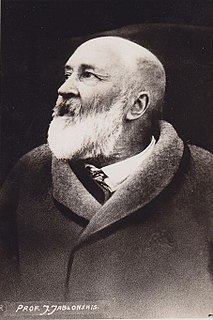 W
WWawrzyniec Cezary Anichini was an Italian architect, active mostly in what is now the Republic of Lithuania.
 W
WAntanas Baranauskas was a Lithuanian poet, mathematician and Catholic bishop of Sejny. Baranauskas is best known as the author of the Lithuanian poem Anykščių šilelis. He used various pseudonyms, including A.B., Bangputys, Jurksztas Smalaūsis, Jurkštas Smalaūsis, and Baronas. He also wrote poetry in Polish.
 W
WAntanas Chodakauskas was a Lithuanian nobleman, a landowner, a player in the Lithuanian National Revival movement and the father of Romanas Chodakauskas, Sofija Smetonienė, Tadas Chodakauskas and Jadvyga Tūbelienė.
 W
WSophie de Choiseul-Gouffier was a Lithuanian novelist. She was a member of the Lithuanian nobility from the Tyzenhaus family. She married Antoine Louis Octave de Choiseul-Gouffier, a French noble in service of Napoleon after the French invasion of Russia in 1812 and owner of Plateliai manor. She is one of the first female writers in Lithuania. She wrote in French. Her novels are inspired from the life of females in contemporary Lithuanian nobility.
 W
WJonas Jablonskis was a distinguished Lithuanian linguist and one of the founders of the standard Lithuanian language. He used the pseudonym Rygiškių Jonas, taken from the small town named Rygiškiai where he spent his childhood.
 W
WAbraham Mapu was a Lithuanian novelist. He wrote in Hebrew as part of the Haskalah (enlightenment) movement. His novels, with their lively plots encompassing heroism, adventure and romantic love in Biblical settings, contributed to the rise of the Zionist movement.
 W
WJurgis Matulaitis-Matulevičius was a Roman Catholic prelate who served as the Bishop of Vilnius from late 1918 until his resignation in 1925. Matulaitis was also the founder of the Sisters of the Immaculate Conception and the Handmaids of Jesus in the Eucharist; he served as the Superior-General of the Marian Fathers from 1911 until his death. He worked in secret to revive the Marian Fathers after the Russian authorities suppressed all religious orders and he even relinquished his teaching position to better dedicate himself to that secret revival. He was a noted teacher and spiritual director who set up other branches of the order in places such as Switzerland and the United States far from Russian authorities.
 W
WTeofilius Matulionis was a Lithuanian prelate of the Roman Catholic Church. He was consecrated a bishop in secret and spent most of his years as bishop in prison. His death was likely due to poisoning by officials of the USSR.
 W
WKipras Petrauskas was a Lithuanian operatic tenor, professor, and Lithuanian Association of Artists member. The national opera foundation is associated with him. He was married to Elena Žalinkevičaitė-Petrauskienė. In 1942, he was asked to hide a Jewish baby girl, Dana Pomeranz, which he and his wife agreed to do. To hide the girl better, he and his wife left the city, moving first to a Lithuanian village, and later to Austria and then Germany. In 1947, they came back to Lithuania, found Dana's parents, and gave her back to them.
 W
WSofija Pšibiliauskienė née Ivanauskaitė and Marija Lastauskienė were two Lithuanian sister writers of Polish origin, using the same pen name Lazdynų Pelėda.
 W
WAlfred Isidore Romer, or Alfred Izydor Römer was a Belarusian, Lithuanian and Baltic-German/Polish painter, sculptor, printmaker and medallist who worked in what is now Lithuania and Belarus.
 W
WKanuty Rusiecki was a Polish–Lithuanian painter. He authored the first Polish Romantic theory of painting.
 W
WJan Rustem was a painter of Armenian ethnicity who lived and worked in the territories of the Polish–Lithuanian Commonwealth. Primarily a portrait painter, he was commissioned to execute portraits of notable personalities of his epoch. For many years he was a professor at Vilnius University.
 W
WSofija Smetonienė, was the wife of the first President of Lithuania Antanas Smetona and served as the First Lady of Lithuania from April 4, 1919 to June 19, 1920 and again from December 19, 1926 to June 15, 1940. Sofija was a member of the Chodakowski noble family.
 W
WFranciszek Smuglewicz was a Polish-Lithuanian draughtsman and painter. Smuglewicz is considered a progenitor of Lithuanian art in the modern era. He was precursor of historicism in Polish painting. He was also a founder of Vilnius school of art, his most prominent students were Jan Rustem, Jan Krzysztof Damel, Gaspar Borowski and Józef Oleszkiewicz. His father Łukasz Smuglewicz and brother Antoni were also painters.
 W
WAntanas Strazdas was a Lithuanian priest and poet. Because of his humble origins and lifestyle, he became somewhat of a folklore hero.
 W
WPovilas Višinskis was a Lithuanian cultural and political activist during the Lithuanian National Revival. He is best remembered as a mentor of literary talent. He discovered Julija Žymantienė (Žemaitė) and advised Marija Pečkauskaitė, Sofija Pšibiliauskienė, Gabrielė Petkevičaitė (Bitė), Jonas Biliūnas, Jonas Krikščiūnas (Jovaras), helping them edit and publish their first works.
 W
WDavid Wolffsohn was a Lithuanian-Jewish businessman, prominent early Zionist and second president of the Zionist Organization (ZO).
 W
WŽemaitė was the pen name of Julija Beniuševičiūtė-Žymantienė. She was a Lithuanian/Samogitian writer, democrat and educator. Born to impoverished gentry, she became one of the major participants in the Lithuanian National Revival. She wrote about peasant life in the style best described as realism.